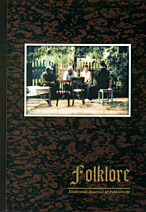Narrative Form and the Structure of Myth
Narrative Form and the Structure of Myth
Author(s): Emily LyleSubject(s): Customs / Folklore
Published by: Eesti Kirjandusmuuseum
Keywords: analogical discovery method; code; cosmology; gods; Indo-European; king; matrilineal succession; myth; narrative structure; mapping
Summary/Abstract: At each stage in transmission of a tale from generation to generation, modifications take place but something remains. Thus there is a potential for material to be retained from a time in the distant past when the narrative was embedded in a total oral worldview or cosmology. This article introduces the analogical discovery method and uses it to build up a structure based on a group of tales from Greece , Ireland and Wales. It draws the conc lusion that the structure of myth that is indirectly discernible through them deals with four generations, both of gods and of humans, the last of which contains the king. It agrees with the view proposed by Georges Dumézil that myth reflects human social organisation and argues in addition that matrilineal succession to kingship provides a good fit with the tales. The suggestion is put forward that there was a total, quite complex, cosmological code of which narratives retain traces and that scholars today have the opportunity of decipheringit.
Journal: Folklore: Electronic Journal of Folklore
- Issue Year: 2006
- Issue No: 33
- Page Range: 59-70
- Page Count: 12
- Language: English

